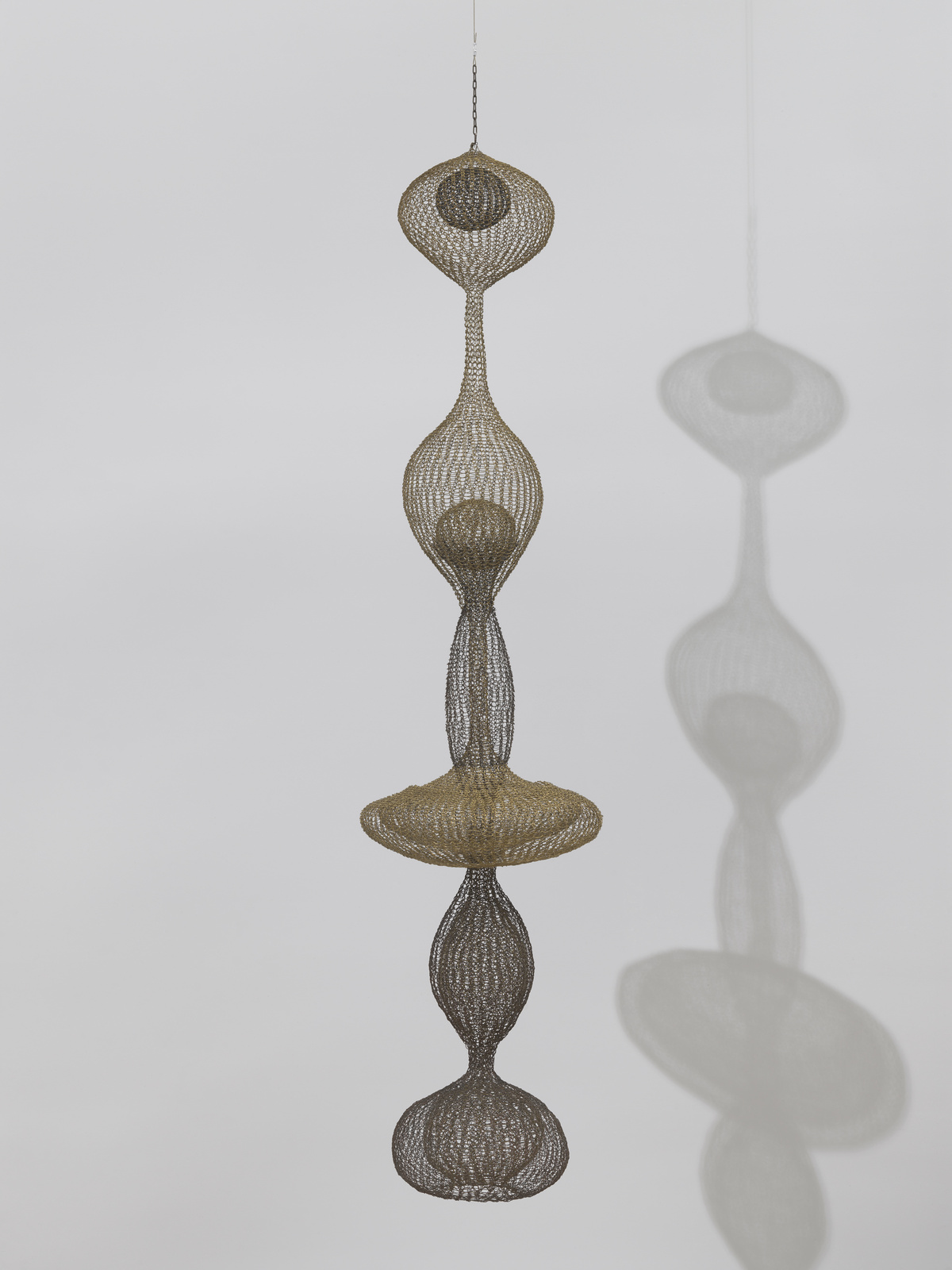Ruth Asawa
Untitled (S.270, Hanging Six-Lobed, Complex Interlocking Continuous Form within a Form with Two Interior Spheres)
1955, refabricated 1957–1958
Not on view
Date
1955, refabricated 1957–1958
Classification
Sculpture
Medium
Brass and steel wire
Dimensions
Overall: 63 7/8 × 14 15/16 × 14 15/16in. (162.2 × 37.9 × 37.9 cm)
Accession number
63.38
Credit line
Whitney Museum of American Art, New York; gift of Howard Lipman
Rights and reproductions
© 2020 Estate of Ruth Asawa / Artists Rights Society (ARS), New York. Courtesy The Estate of Ruth Asawa and David Zwirner
Audio
-
0:00
Untitled (S.270, Hanging Six-Lobed, Complex Interlocking Continuous Form within a Form with Two Interior Spheres), 1955 (refabricated 1957–58)
0:00
Narrator: Ruth Asawa made sculptures like this one by looping wire, a technique that she learned on a trip to Mexico City in 1947.
Ruth Asawa: That’s where I learned to knit and to knit with wire.
If you take material you like to know how far you can take it from what it’s traditionally known to do. You find that you can go from two dimensions to three dimensions, that interests me. It can be any material. It doesn’t have to be wire. It’s just that that happens to be material that I use. And I think that is important. That you take an ordinary material like wire and you give it a new definition. That’s all. I’m interested in what it can do by itself, that’s what excites me.
Narrator: The Archives of American Art recorded this oral history with Asawa in 2002.
[Oral history interview with Ruth Asawa and Albert Lanier, 2002 June 21-July 5. Archives of American Art, Smithsonian Institution.]
-
Ruth Asawa, Untitled (S.270, Hanging Six-Lobed, Complex Interlocking Continuous Form within a Form with Two Interior Spheres), 1954, refabricated in 1958
In Making Knowing: Craft in Art, 1950–2019 (Spanish)
0:00
Ruth Asawa, Untitled (S.270, Hanging Six-Lobed, Complex Interlocking Continuous Form within a Form with Two Interior Spheres), 1954, refabricated in 1958
0:00
Narrador: Ruth Asawa hacía esculturas como esta tejiendo alambre metálico, una técnica que aprendió durante un viaje a la Ciudad de México en 1947.
Ruth Asawa: Ahí es donde aprendí a tejer, y a tejer en alambre.
Narrador: Asawa fue a Black Mountain College, una escuela de arte experimental que alentaba a los estudiantes a utilizar objetos cotidianos y materiales encontrados.
Ruth Asawa: Si utilizas un material, quieres saber qué tanto lo puedes alejar del uso que se le da tradicionalmente. Descubres que puedes pasar de dos dimensiones a tres dimensiones, eso me atrae. Puede ser cualquier material. No hace falta que sea alambre.
Narrador: En 2002, los Archivos de Arte Estadounidense registraron esta entrevista oral con Asawa. En ese momento, ella tenía setenta y seis años. En la entrevista, le preguntaron si le molestaba que su trabajo fuera asociado a la artesanía en lugar de a la escultura.
Ruth Asawa: No me molesta. No importa si es arte o artesanía. Esas son definiciones que la gente atribuye a las cosas. Me gusta porque el material es irrelevante. Resulta ser, simplemente, el material que yo uso. Y creo que eso es importante: tomar un material común como el alambre y darle una nueva definición. Eso es todo. Me interesa lo que ese material puede lograr en sí mismo, eso es lo que me llena de entusiasmo.
-
0:00
Ruth Asawa, Untitled (S.270, Hanging Six-Lobed, Complex Interlocking Continuous Form within a Form with Two Interior Spheres), 1954, refabricated in 1958
0:00
Narrator: Ruth Asawa made sculptures like this one by weaving metal wire, a technique that she learned on a trip to Mexico City in 1947.
Ruth Asawa: That’s where I learned to knit and to knit with wire.
Narrator: Asawa attended Black Mountain College, an experimental art school that encouraged students to use everyday, found materials.
Ruth Asawa: If you take material you like to know how far you can take it from what it’s traditionally known to do. You find that you can go from two dimensions to three dimensions, that interests me. It can be any material. It doesn’t have to be wire.
Narrator: In 2002, the Archives of American Art recorded this oral history with Asawa. In it, she was asked whether it bothered her that her work might be seen in relation to craftmaking, rather than sculpting.
Ruth Asawa: It doesn’t bother me. Whether it’s a craft or whether it’s art. That is a definition that people put on things. And what I like is the material is irrelevant. It’s just that that happens to be material that I use. And I think that is important. That you take an ordinary material like wire and you give it a new definition. That’s all. I’m interested in what it can do by itself, that’s what excites me.
[Oral history interview with Ruth Asawa and Albert Lanier, 2002 June 21-July 5. Archives of American Art, Smithsonian Institution.]
-
Ruth Asawa, Untitled (S.270, Hanging Six-Lobed, Complex Interlocking Continuous Form within a Form with Two Interior Spheres), 1954, refabricated in 1958
In Making Knowing: Craft in Art, 1950–2019 (Kids)
0:00
Ruth Asawa, Untitled (S.270, Hanging Six-Lobed, Complex Interlocking Continuous Form within a Form with Two Interior Spheres), 1954, refabricated in 1958
0:00
Narrator: Ruth Asawa made this sculpture out of wire. She learned how to make the forms in Mexico, watching weavers make traditional baskets. Because she worked in wire, her weavings were see-through—made up mostly of air. At the same time, the materials seem really strong. Asawa once described her woven wire as seeming like medieval chain mail, a material used to make armor. Big yet light, strong yet airy: Asawa was interested in these oppositions. She also liked the way the shapes reminded her of things in nature. She once compared the woven patterns to lines she drew with her toes in the soil of the California farm where she had grown up.
Exhibitions
-
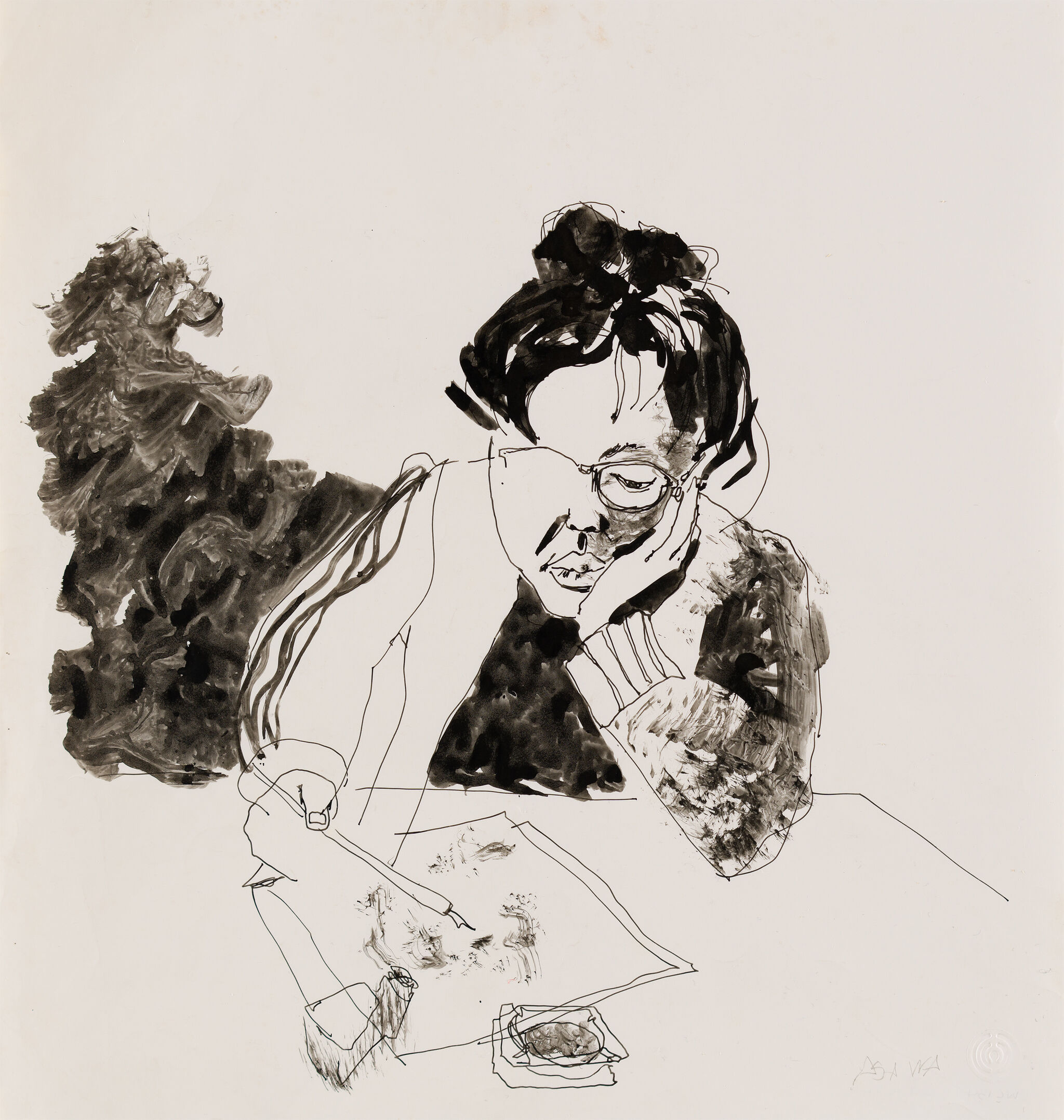
Ruth Asawa Through Line
Sept 16, 2023–Jan 15, 2024
-
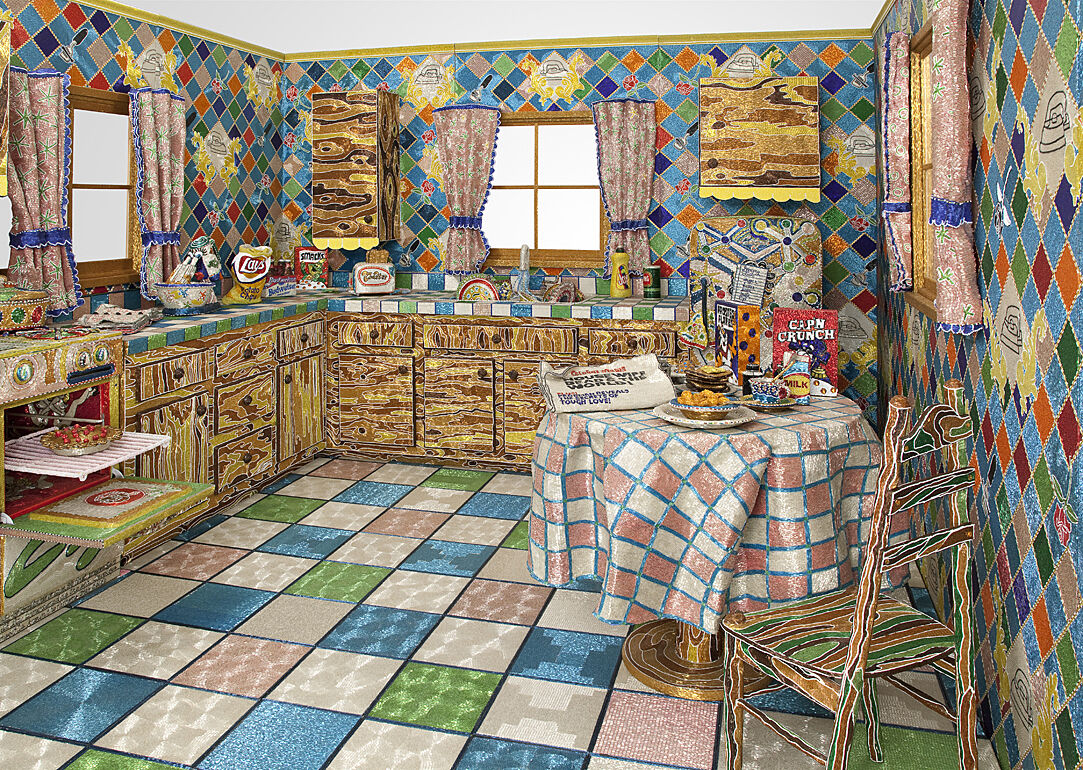
Making Knowing: Craft in Art, 1950–2019
Nov 22, 2019–Feb 20, 2022
-

The Whitney’s Collection: Selections from 1900 to 1965
June 28, 2019–May 1, 2025
-
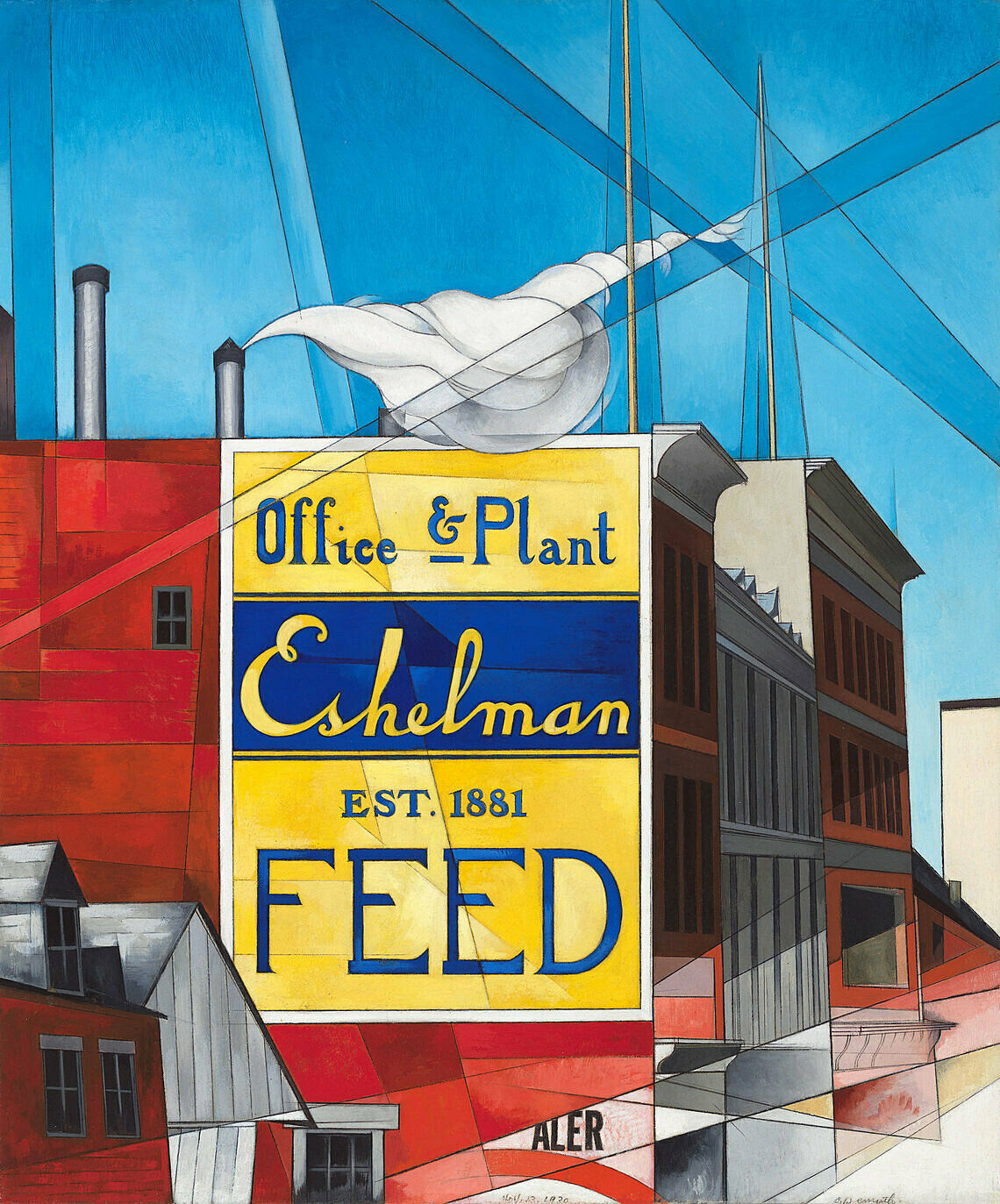
Where We Are: Selections from the Whitney’s Collection, 1900–1960
Apr 28, 2017–June 2, 2019
-
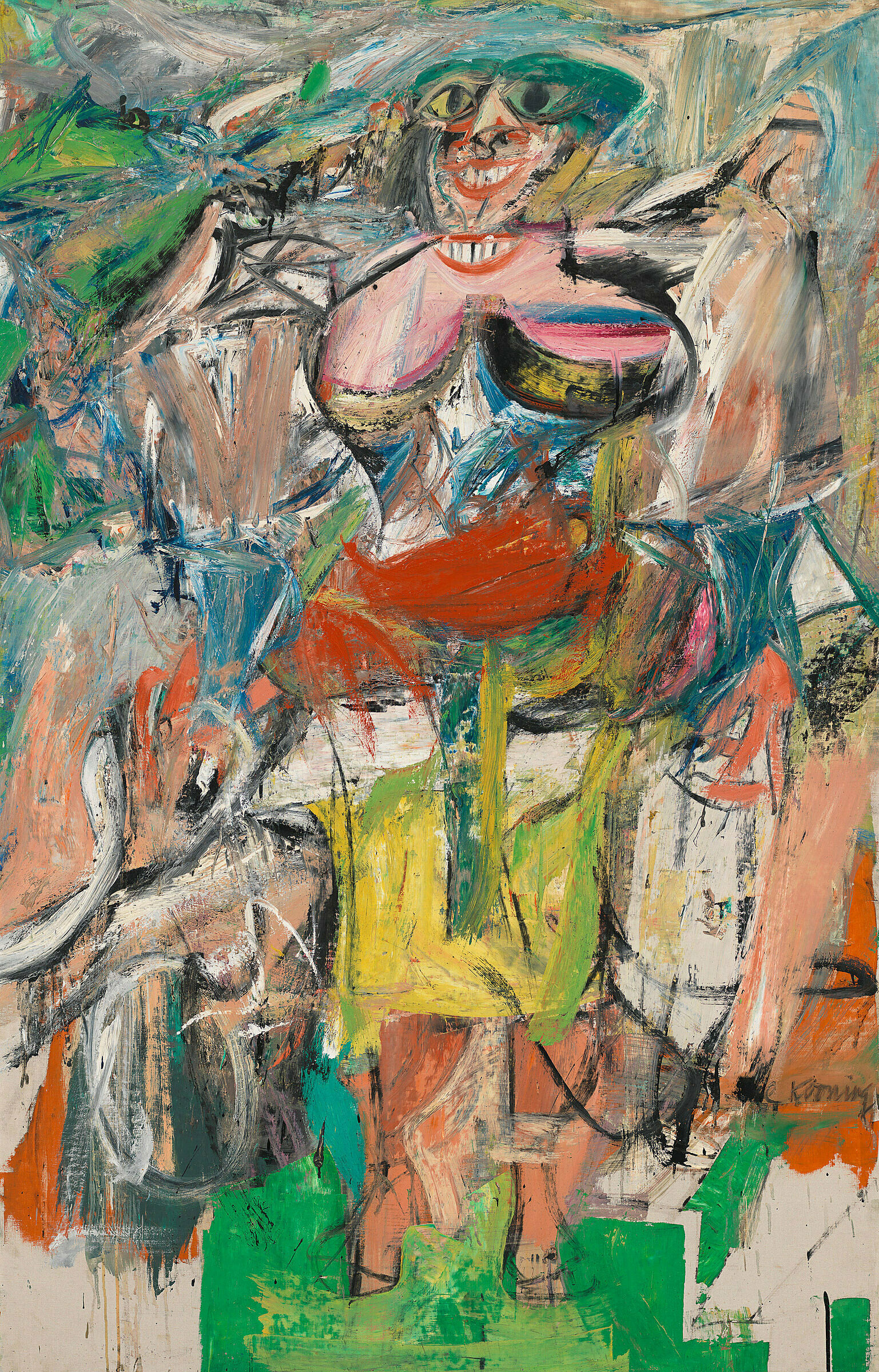
The Whitney's Collection
Sept 28, 2015–Apr 4, 2016
-

America Is Hard to See
May 1–Sept 27, 2015
-
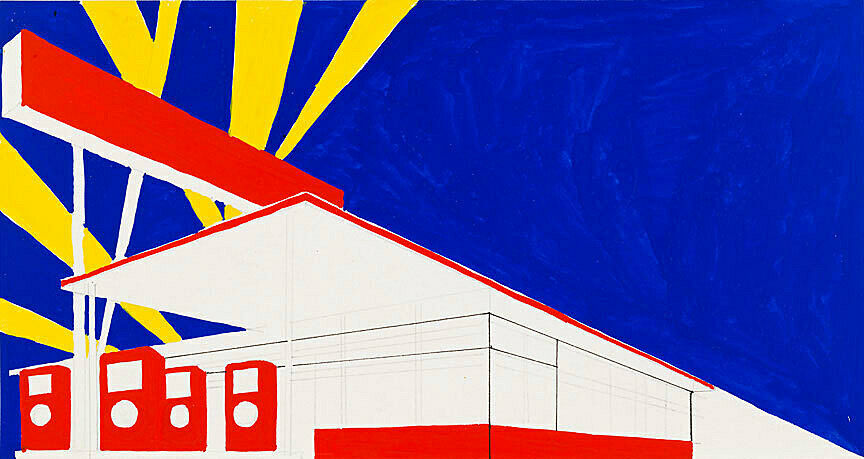
Shaping a Collection: Five Decades of Gifts
July 17–Oct 19, 2014
-
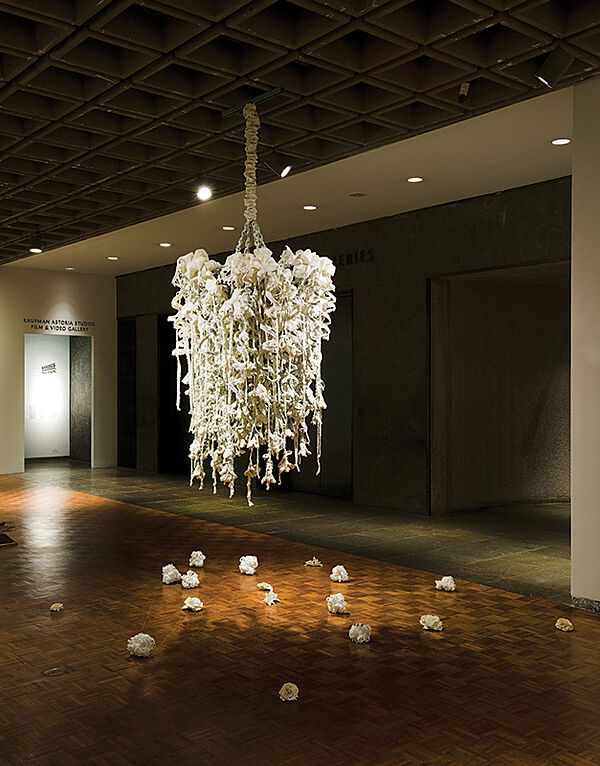
Uncontained
Feb 8–Apr 29, 2007

